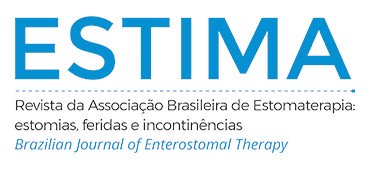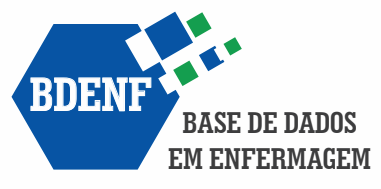Development and validation of an educational technology for the prevention and treatment of pressure injuries
Abstract
Objective: To develop and validate an educational technology designed for patients, family members, and caregivers focused on the prevention and treatment of pressure injuries. Method: This methodological study was conducted in three stages: 1) an integrative review (IR) that guided the development of the technology’s content; 2) the development of a website-based educational tool; and 3) content validation by experts, valuating both the content and the technology itself. Regarding the integrative review stage, research was conducted using the databases of the Virtual Health Library (Portuguese Acronym: BVS), the Journal Portal of the Coordination for the Improvement of Higher Education Personnel (Portuguese Acronym: CAPES), and the Scientific Electronic Library Online (SciELO). Articles published between 2015 and 2019 were included. Experts for content evaluation were selected through convenience sampling, and validation was conducted using the Content Validity Index (CVI). Results: In the integrative review, ten articles and one guideline were selected. Two categories emerged from the analysis: pressure injury prevention and nutritional treatment, which guided the development of the educational technology titled “PreventPele”. The literature review also informed the development of care guidance tabs, a measurement scale, and sections on treatment-related products and technologies. Content validation was conducted by 12 expert judges, achieving a 95.2% agreement rate and an overall Content Validity Index (CVI) of 1. Conclusion: This study led to the development of an open-access website on pressure injury prevention designed for healthcare professionals, family members, and caregivers, offering validated, up-to-date, and high-quality information.
Downloads
Metrics
References
European Pressure Ulcer Advisory Panel NPIAP and PPPIA. National Pressure Injury Advisory Panel [Internet]. 3rd ed. Haesler E, editor. EPUAP/NPIAP/PPPIA; 2019 [citado 2020 Mar 27]. Disponível em: https://npiap.com/404.aspx?404;http://www.npuap.org:80/national-pressure-ulcer-advisory-panel-npuap-announces-a-change-in-terminology-from-pressureulcer-to-pressure-injury-and-updates-the-stages-of-pressure-injury/
Silva SL, Medeiros MAA, Alves MS, Guênes GT, Guênes GMT, Anjos RM, et al. Classificação, fatores de risco, fisiopatologia e complicações cicatriciais das lesões por pressão: uma síntese narrativa. Conjecturas. 2022;22(9):24-35. https://doi.org/10.53660/CONJ-1420-AG04
Li Z, Lin F, Thalib L, Chaboyer W. Global prevalence and incidence of pressure injuries in hospitalised adult patients: a systematic review and meta-analysis. Int J Nurs Stud. 2020 May;105:103546. https://doi.org/10.1016/j.ijnurstu.2020.103546
Gama BG, Mola R, Fernandes FECV, Xavier SB. Prevalência e fatores associados à ocorrência de lesão por pressão em pacientes internados em unidade de terapia intensiva. HU Rev. 2020 May;46(0):1-8. https://doi.org/10.34019/1982-8047.2020.v46.28248
Silva LLO, Felix LG, Negreiros RV, Abreu RA. Prevalence and incidence of pressure injury in patients hospitalized in medical clinic units. Braz J Dev. 2022 Mar;8(3):16138-49. https://doi.org/10.34117/BJDV8N3-042
Conselho Federal de Enfermagem. Resolução COFEN no 567/2018. Regulamenta a atuação da equipe de enfermagem no cuidado aos pacientes com feridas [Internet]. Brasília: Diário Oficial da União; 2018. Seção 1; p. 112 [citado 2020 mar. 27]. Disponível em: https://www.cofen.gov.br/resolucao-cofenno-567-2018/
Gheno J, Weis AH. Care transtion in hospital discharge for adult patients: integrative literature review. Texto Contexto Enferm. 2021;30:e20210030. https://doi.org/10.1590/1980-265X-TCE-2021-003030
Pavinati G, Lima LV, Soares JPR, Nogueira IS, Jaques AE, Baldissera VDA. Tecnologias educacionais para o desenvolvimento de educação na saúde: uma revisão integrativa. Arquivos de Ciências da Saúde da UNIPAR. 2022;26(3):328-49. https://doi.org/10.25110/arqsaude.v26i3.2022.8844
Galvão PCC, Vasconcelos CB, Amorim CRF, Lima ROC, Fiorentino G. Caracterização dos estudos metodológicos em enfermagem: Revisão integrativa. International Journal of Development Research. 2022;12:23954.
Echer IC. Elaboração de manuais de orientação para o cuidado em saúde. Rev Latino-am Enfermagem. 2005;13(5):754-7. https://doi.org/10.1590/S0104-11692005000500022
Paula CC, Padoin SMM, Galvão CM. Revisão integrativa como ferramenta para tomada de decisão na prática em saúde. Porto Alegre: Moriá Editora; 2018.
Page MJ, McKenzie JE, Bossuyt PM, Boutron I, Hoffmann TC, Mulrow CD, et al. The PRISMA 2020 statement: an updated guideline for reporting systematic reviews. Syst Rev. 2021;10:89. https://doi.org/10.1186/s13643-021-01626-4
Santos CMC, Pimenta CAM, Nobre MRC. The PICO strategy for the research question construction and evidence search. Rev Lat Am Enfermagem. 2007;15(3):508-11. https://doi.org/10.1590/s0104-11692007000300023
Silva RP. Portal educativo de apoio ao cuidado a pessoas com estomia [dissertação]. Porto Alegre: Universidade do Vale do Rio dos Sinos; 2018.
Coluci MZO, Alexandre NMC, Milani D. Construção de instrumentos de medida na área da saúde. Ciênc Saúde Coletiva. 2015;20(3):925-36. https://doi.org/10.1590/1413-81232015203.04332013
Alexandre NMC, Coluci MZO. Validade de conteúdo nos processos de construção e adaptação de instrumentos de medidas. Ciênc Saúde Coletiva. 2011;16(7):3061-8. https://doi.org/10.1590/S1413-81232011000800006
Pasquali L. Psicometria: teoria dos testes na psicologia e na educação. Petrópolis: Vozes; 2016.
Prevent Pele [Internet]. [citado 2024 fev. 21]. Disponível em: https://preventpele.com.br/
Tibes-Cherman CM, Westin UM, Cherman EA, Zem-Mascarenhas SH, Évora YDM. Uso de simulação digital no Ensino Técnico de Enfermagem para prevenção de lesões por pressão. Braz J Hea Rev. 2020;3(4):9649-66. https://doi.org/10.34119/bjhrv3n4-200
Fontenele NAO, Ximenes MAM, Brandão MGSA, Fernandes CS, Galindo Neto NM, Carvalho REFL, et al. Creation and validation of a serial album for the prevention of Pressure Ulcer: a methodological study. Rev Bras Enferm. 2021;74(3):e20201060. https://doi.org/10.1590/0034-7167-2020-1060
Andrade SM, Silva LV, Göttems LBD, Melo MC. Tecnologia educativa para prevenção e tratamento da lesão por pressão. Res Soc Dev. 2022;11(8):e51111831056. https://doi.org/10.33448/rsd-v11i8.31056
Souza MC, Loureiro MDR, Batiston AP. Cultura organizacional: prevenção, tratamento e gerenciamento de risco da lesão por pressão. Rev Bras Enferm. 2020;73(3):e20180510. https://doi.org/10.1590/0034-7167-2018-0510
Ximenes MAM, Fontenele NAO, Bastos IB, Macêdo TS, Galindo Neto NM, Caetano JA, et al. Construção e validação de conteúdo de cartilha educativa para prevenção de quedas no hospital. Acta Paul Enferm. 2019;32(4):433-41. https://doi.org/10.1590/1982-0194201900059
Santos RR, Ribeiro ER, Milani LRN, Osternack KT, Sanches LC, Garbelini MCL. Lesão por pressão: manual para o cuidador de paciente acamado. Braz J Hea Rev. 2022;5(3):9676-93. https://doi.org/10.34119/bjhrv5n3-141
Nogueira PC, Godoy S, Mendes IAC, Roza DL. Conhecimento dos cuidadores de indivíduos com lesão medular sobre prevenção de úlcera por pressão. Aquichan. 2015;15(2):188-99. https://doi.org/10.5294/AQUI.2015.15.2.3
Manganelli RR, Kirchhof RS, Pieszak GM, Dornelles CS. Intervenções de enfermeiros na prevenção de lesão por pressão em uma unidade de terapia intensiva. Rev Enferm UFSM. 2019;9:e41. https://doi.org/10.5902/2179769233881
Downloads
Published
How to Cite
Issue
Section
License
Copyright (c) 2025 Elisandra Leites , Patrícia Pedroso da Silva, Luisa Pavinatto, Juliano Teixeira Moraes, Sidiclei Machado Carvalho, Sandra Maria Cezar Leal

This work is licensed under a Creative Commons Attribution 4.0 International License.

























